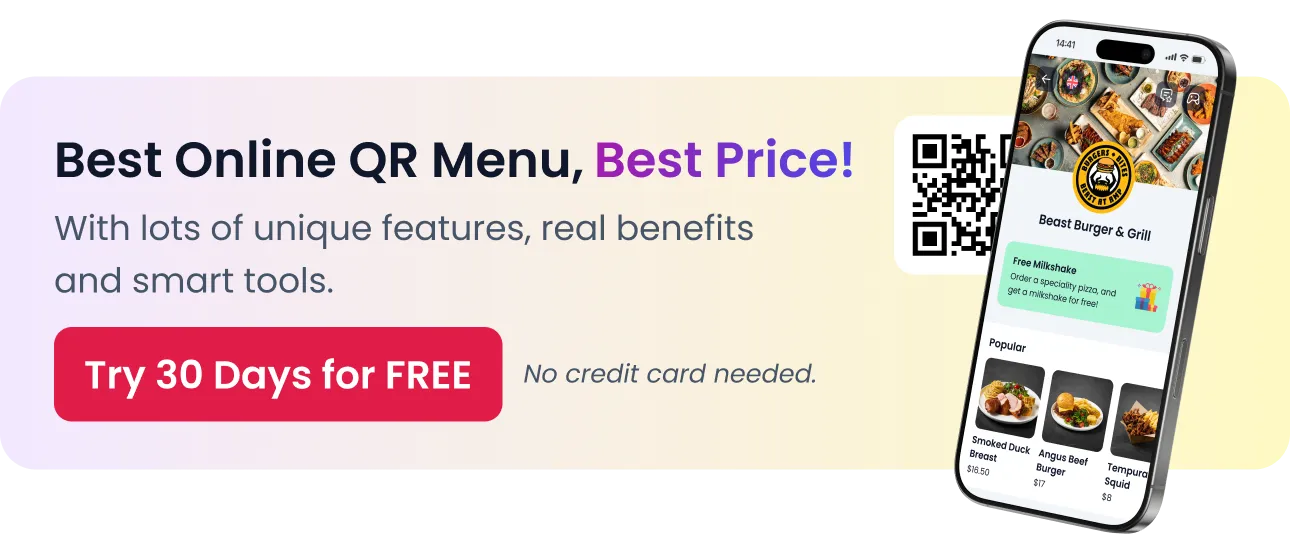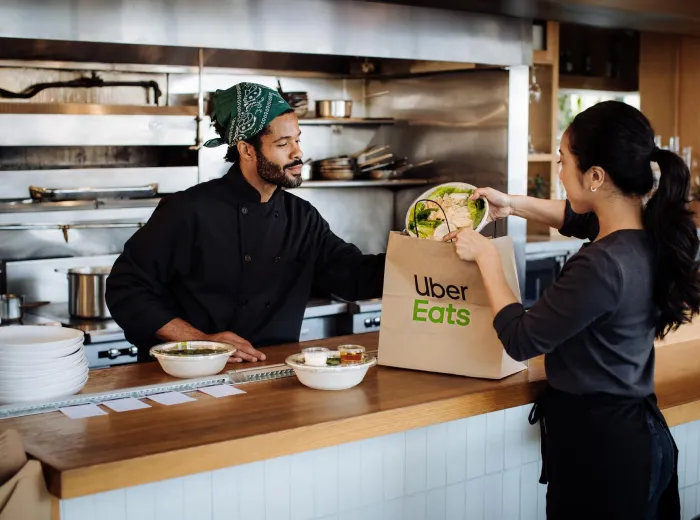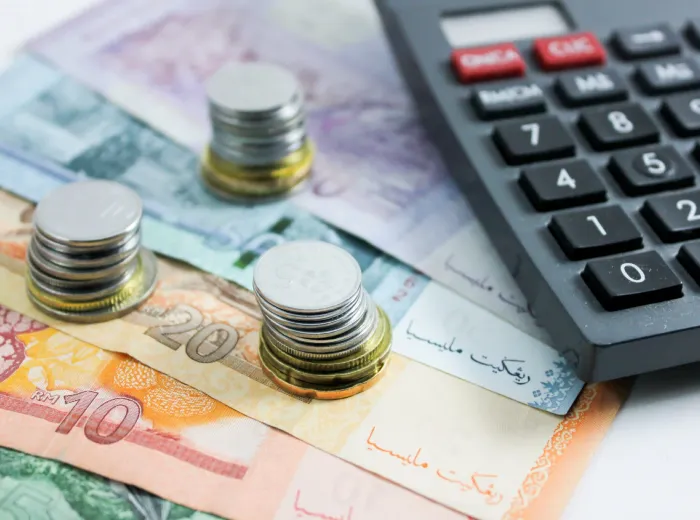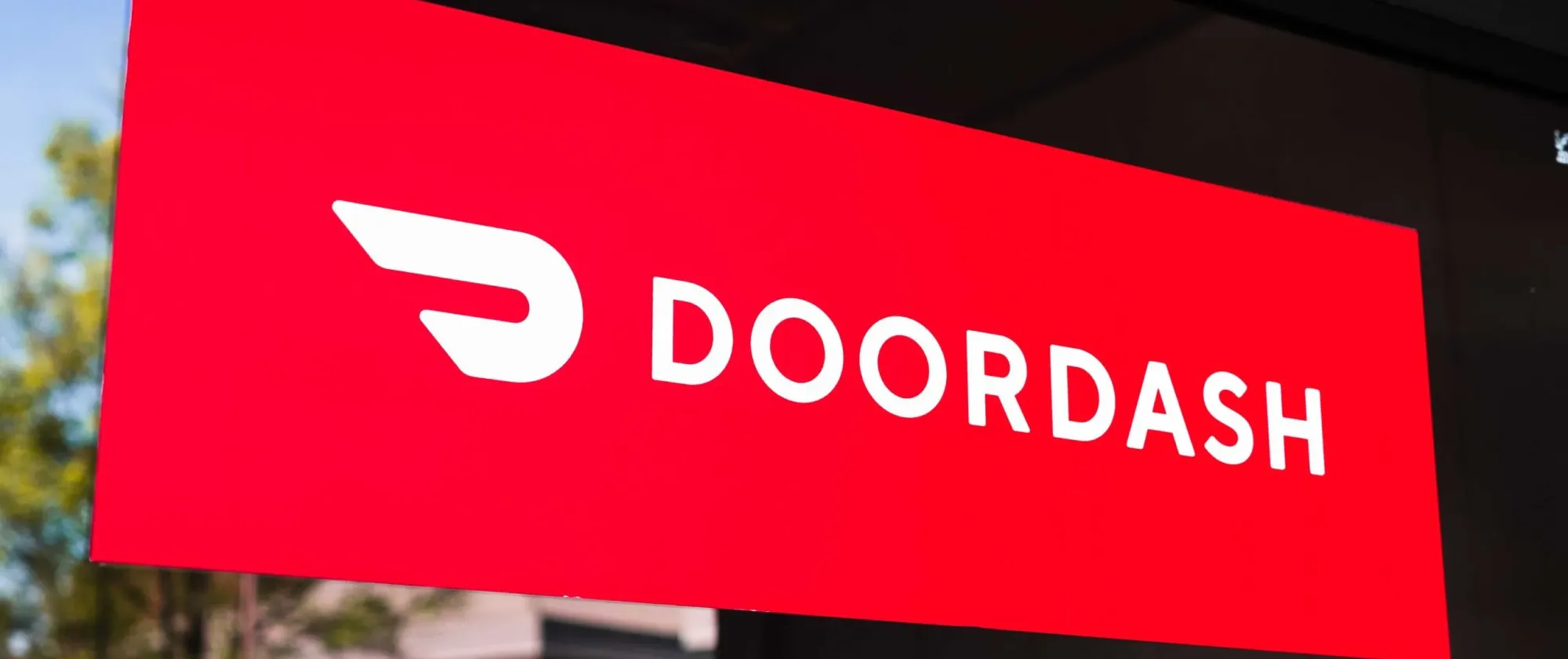
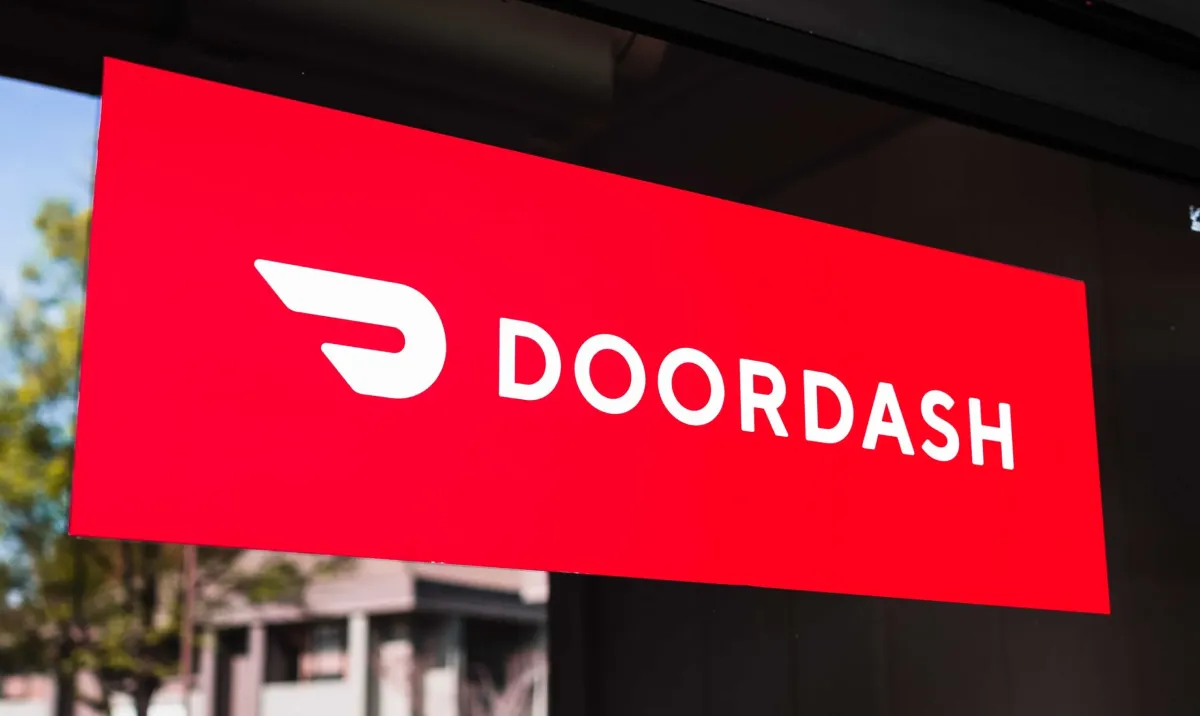
How to Increase Orders on DoorDash? | Tips for Restaurants
DoorDash can be a game-changer for restaurants — but only if you know how to work it to your advantage. With thousands of competitors on the app and ever-changing customer expectations, simply being listed isn’t enough. To stand out and grow your delivery revenue, you need a clear, strategic approach that goes beyond just uploading a menu and hoping for the best.
Whether you’re a small family-run cafe, a busy ghost kitchen, or a full-service restaurant expanding into delivery, this guide is packed with proven tips that come straight from real restaurant operations. We’ll walk through how DoorDash’s ranking system works, what gets customers to click and order, and the smart tactics that help restaurants boost visibility, raise ticket sizes, and turn first-time customers into regulars.
The good news? Most of these changes don’t require massive investments — just smart planning and consistent execution. Let’s dive in.
Understand How DoorDash Ranks Restaurants
If you want more visibility on DoorDash, you have to play by its rules — or more accurately, by its algorithm. The platform doesn’t randomly decide which restaurants show up first. It uses a mix of performance metrics, customer behavior, and your profile setup to determine rankings. Understanding what drives this algorithm is the first step to getting seen (and ordered from) more often.
Key Factors That Influence Visibility
DoorDash uses several internal signals to determine which restaurants rank higher in searches and categories. Some of the most important include:
- Customer ratings and reviews – Restaurants with more 4- and 5-star reviews tend to rank higher.
- Order accuracy – Mistakes like missing items or incorrect orders can quickly lower your score.
- Prep and delivery speed – DoorDash tracks your estimated prep time versus actual completion time.
- Menu quality – Well-organized menus with photos and clear descriptions are rewarded.
- Popularity and conversion rate – If people view your listing and actually order, that matters.
DoorDash’s algorithm is all about customer satisfaction and reliability. The better the experience you deliver, the more the platform will recommend you.
How the “Top of Search” Really Works
When a customer opens the app and types in “burgers” or browses by cuisine, DoorDash doesn’t show results randomly. Instead, it highlights:
- Restaurants with high ratings and few complaints
- Those that are open and can fulfill quickly
- DashPass-eligible options (as DashPass users are more likely to order)
- Listings with strong menu photos and clear branding
The top of search is premium real estate. Even if your food is great, you won’t make it there unless your operational and customer metrics are strong. Consistency matters more than perfection — the algorithm rewards restaurants that perform reliably day after day.
Optimize Your Menu for Conversions
Your DoorDash menu is more than just a list of dishes — it’s your storefront. Customers can’t smell your food or ask your server for a recommendation, so every image, description, and layout decision plays a role in whether they choose you or scroll past. A thoughtfully designed menu can directly impact your order volume, average ticket size, and overall DoorDash performance.
Add High-Quality Photos to Top Items
A great photo can do what a thousand words can’t — make someone crave your food instantly. DoorDash even says that items with photos get significantly more orders than those without.
Tips for success:
- Prioritize photos for best-selling and high-margin items.
- Use natural lighting and avoid cluttered backgrounds.
- Show portion size and packaging (especially for delivery).
- Use a consistent look for brand recognition.
If you’re on a budget, even a basic smartphone photo shoot with a neutral background can outperform stock or missing images.
Write Descriptions That Actually Sell
Descriptions should do more than list ingredients — they should help the customer imagine the experience of eating the dish.
What works:
- Keep it under 250 characters.
- Focus on flavor, texture, and unique elements.
- Use simple, enticing language (e.g., “crispy,” “slow-cooked,” “zesty”).
Bad: “Chicken sandwich with lettuce and tomato.”
Better: “Crispy buttermilk-fried chicken breast on a toasted brioche bun with tangy slaw and house-made pickles.”
Price Strategically for Online Buyers
Delivery customers behave differently than dine-in guests — and your pricing should reflect that.
Here’s how to adapt:
- Bundle items (e.g., meal deals or combo boxes) to increase order size.
- Offer smaller portions for customers wanting to try something without committing to a full-size meal.
- Use strategic pricing to offset DoorDash fees (many restaurants add 10–15% to their delivery prices).
Also, highlight high-margin add-ons like extra sauce, sides, or drinks — they’re easy wins for boosting average spend.
Organize Your Menu for Easy Scanning
Most customers spend less than 60 seconds browsing. If your menu feels chaotic or overwhelming, they’ll move on.
Menu layout tips:
- Group items into clear categories (e.g., Appetizers, Bowls, Burgers, Family Meals).
- Put bestsellers and bundles at the top of each section.
- Hide or delete seasonal items that are no longer available to avoid confusion.
Clean layout = faster decisions = more orders. Don’t let a messy menu get in the way of your food.
Use DoorDash Promotions the Smart Way
Promotions on DoorDash can be powerful tools to drive new customer traffic, encourage repeat business, or boost slow days — but only if you use them strategically. Random discounts eat into your margins without guaranteeing results. The goal is to run promotions that work for your business, not just DoorDash’s bottom line.
Which Promotions Work Best?
DoorDash offers several built-in promo types, each with different use cases. Choosing the right one depends on your goals:
- $X Off Your Order
Great for first-time customer acquisition. Offers like “$5 off $20+” can drive initial trial, especially when paired with high-margin items. - Free Delivery
Reduces friction and cart abandonment. Best used when:- You’re in a competitive category (e.g., pizza or burgers)
- You’re trying to win over DashPass customers
- You’re in a competitive category (e.g., pizza or burgers)
- BOGO (Buy One, Get One Free or 50% Off)
Useful for moving excess inventory or promoting new items. This tactic can also increase average ticket size while offering perceived value. - Loyalty or Repeat Customer Discounts
DoorDash allows you to create perks for returning customers, helping to build habits and encourage reorders.
Each promotion type should align with a clear objective: more orders, higher basket size, or more repeat business.
How to Avoid Losing Money on Discounts
Promotions only help when you maintain your margins. Here’s how to protect profitability:
- Set strict budget limits in the DoorDash dashboard
Always cap the total spend so you don’t overshoot. - Target the right audience
Choose between new, lapsed, or returning customers — don’t waste discounts on buyers who would order anyway. - Limit usage per customer
Prevent abuse by restricting redemptions to once per user or setting daily limits. - Run promotions during slow periods
Use them tactically to fill downtime (like weekday afternoons), not during peak hours when you don’t need the volume. - Bundle to boost average ticket
Example: “Free drink with orders over $25” encourages larger baskets rather than smaller discounted ones.
Approached correctly, promotions can act as a powerful growth lever — not a financial drain. Keep them tied to real goals and review their performance often.
Track Results and Adjust Often
Don’t “set and forget” your promotions. Instead:
- Review promo performance weekly
Track redemptions, average ticket size, and profitability using DoorDash’s analytics tools. - Watch for unintended behavior
If customers are using a discount and only ordering the cheapest item, it’s time to tweak your rules. - Test different formats and timeframes
What works on weekends may not work midweek — experiment to find what drives the best ROI.
Promotions are tools — not silver bullets. When used intelligently, they can drive profitable growth and give you an edge in your category.
Increase Your Positive Ratings and Reviews
On DoorDash, your star rating is one of the most visible and influential factors in whether a customer chooses to order from you. A few bad reviews — or even a lack of reviews — can push you down in the rankings and hurt your conversions. The key is to make gathering positive feedback part of your everyday operations, not just something you think about when things go wrong.
Proactively Ask for Reviews
Customers are more likely to leave a review when prompted — especially if they’ve had a good experience.
Ways to ask (without being pushy):
- Include a printed thank-you note in the bag that says:
“Loved your meal? Let us know on DoorDash — it helps a lot!” - Use a QR code on your packaging that links directly to the review page.
- Add a line on the receipt or label:
“Enjoyed it? Please leave a rating to support local restaurants like ours.”
The key is to be friendly, personal, and consistent. Even a simple nudge can significantly increase your review volume.
Fix Problems Before They Turn Into Complaints
A major source of negative reviews comes from avoidable mistakes like missing items, cold food, or poor packaging.
Here’s how to reduce them:
- Use a checklist system to confirm all items before sealing the bag.
- Implement tamper-proof or sealed packaging to ensure food isn’t touched during delivery.
- Include condiments, utensils, napkins, and other basics without being asked.
- If you’re running late or out of an item, call the customer before the order goes out.
Prevention is far cheaper than recovery. Satisfied customers are more likely to leave positive reviews — and less likely to torch your reputation with a one-star complaint.
Respond to Negative Reviews Professionally
Even with the best systems in place, bad reviews will happen. Your job is to show potential customers that you care and take feedback seriously.
Best practices:
- Respond quickly — ideally within 24–48 hours.
- Acknowledge the issue without getting defensive.
- Offer to make it right (a re-cook, refund, or future credit — depending on the situation).
- Keep your tone professional and empathetic — remember, other customers are reading too.
Example:
“We’re really sorry your order wasn’t up to our usual standard. We’ve already addressed this with our team and would love a chance to make it right. Please contact us directly so we can take care of you.”
A calm, constructive reply won’t erase a 1-star review, but it can turn a bad moment into a reason for someone else to give you a chance.
Monitor Your Rating Metrics Regularly
Stay on top of your feedback through the DoorDash Merchant Portal. Look out for:
- Order issues reports (missing items, cold food, wrong orders)
- Review trends over time
- Most common complaints (e.g., packaging, wait times)
This helps you identify patterns and proactively train staff or adjust procedures.
Your reviews are your social proof. The more you actively manage and cultivate them, the more trust you’ll build — and the more orders you’ll earn.
Speed Up Prep and Delivery Times
Speed matters — a lot. DoorDash prioritizes restaurants that consistently prepare and hand off orders quickly. Customers are also more likely to reorder from businesses that deliver hot, fresh food without delays. Even shaving off a few minutes per order can give you a noticeable edge in rankings, reviews, and repeat business.
Reduce Time Between Order and Acceptance
One of the fastest ways to improve your metrics is by shortening the time between when an order is placed and when your staff acknowledges it.
Here’s how:
- Assign a dedicated staff member or tablet station to handle DoorDash during all service hours.
- Turn on audio alerts or push notifications so you never miss an order.
- Ensure your internet connection and DoorDash tablet are reliable and fast — even a weak signal can cause delays.
Orders sitting unacknowledged for several minutes can hurt both your ranking and your customer experience. Instant acceptance shows DoorDash that your team is on top of things.
Set Realistic Prep Times in the Dashboard
DoorDash allows you to set and adjust prep times based on your kitchen’s pace. The trick is to be honest — not overly optimistic.
Tips:
- Base estimates on your average performance during busy hours, not your fastest times.
- Update prep times seasonally or during high-traffic events (e.g., holidays, local festivals).
- Use DoorDash’s analytics to monitor actual vs. estimated prep times and adjust as needed.
When you consistently hit your quoted times, DoorDash is more likely to prioritize your listing.
Improve Coordination with Dashers
A poor handoff experience can slow things down and lead to cold food or bad reviews — even when your kitchen runs on time.
Best practices:
- Designate a clear pickup area for drivers, ideally separate from customer traffic.
- Use shelving or labeled bins to keep multiple orders organized and ready for fast grab-and-go.
- Label bags clearly with order names or numbers to avoid mix-ups.
- Consider adding a small buffer (2–3 minutes) to prep times if Dashers consistently show up early and have to wait.
When drivers can get in and out without hassle, your delivery times improve — and so does your DoorDash performance score.
Streamline Your Kitchen Workflow for Delivery Orders
In many restaurants, delivery orders slow down the line. But it doesn’t have to be that way.
Tactics to consider:
- Create a dedicated delivery station for packing and staging.
- Prep common delivery items in advance during slow periods.
- Train staff on prioritizing time-sensitive items (like fries or fried food) to minimize sogginess.
- Use color-coded tickets or monitors to distinguish delivery from dine-in and to-go.
Efficiency behind the scenes is just as critical as what the customer sees — and DoorDash measures it all.
Fast prep and handoff times improve more than just delivery speed — they enhance your visibility, your ratings, and your bottom line. A few operational tweaks can pay off big in the long run.
Update Your Listing and Branding
Your DoorDash listing is often the first impression potential customers get of your restaurant — even before your food. An outdated or poorly presented profile can sink your visibility and conversion rate, no matter how great your menu is. Optimizing your storefront ensures you’re attracting clicks, standing out in search, and giving customers the confidence to order from you.
Use a Clear, Searchable Restaurant Name
While branding is important, clarity comes first on delivery platforms. Your name needs to make sense in a fast scroll and search context.
Tips:
- Avoid confusing or stylized spellings (e.g., “Th3 B!stro”).
- Include a keyword or descriptor if possible (e.g., “Mama’s Thai Kitchen” vs. “Mama’s”).
- If you operate under a different delivery name, make sure it’s recognizable to locals.
Keep in mind that customers often search for food types, not restaurant names — so clarity helps you show up in the right results.
Customize Your Storefront Description
Your DoorDash description isn’t just filler — it’s your elevator pitch. It can help customers understand what kind of experience to expect and influence decision-making in under 10 seconds.
Include:
- Cuisine type and specialties (“Authentic Neapolitan pizza made with imported ingredients”)
- Any standout features (“Family meal bundles, vegan options, halal-certified”)
- A short tone that matches your brand (fun, professional, traditional, etc.)
Avoid generic lines like “We serve delicious food with quality ingredients.” Make it specific and enticing.
Add Tags and Categories That Match What People Search For
DoorDash allows you to assign cuisine types and tags to your listing — this helps customers find you when browsing or using filters.
Best practices:
- Choose primary cuisine types that align with your actual offerings.
- Add subtags like “vegan,” “gluten-free,” “desserts,” “family meals,” or “coffee” to match search behavior.
- Avoid overloading with irrelevant tags just to get visibility — it may confuse users and lead to poor reviews.
A well-tagged profile helps customers looking for something specific discover you faster.
Refresh Your Branding Elements Regularly
What else customers notice at a glance:
- Your logo – Ensure it’s high-resolution and easy to read at small sizes.
- Photos on your storefront – These should be real, up-to-date images of your food, packaging, or interior (if relevant).
- Cover image or banner – Some DoorDash listings allow a header photo. Use it to showcase your atmosphere or best dish.
Think of your DoorDash profile as your digital curb appeal. Clean, consistent, and inviting visuals build trust and drive more orders.
Investing in your DoorDash listing doesn’t cost much — but it can pay off significantly. When customers feel confident in your branding and clarity, they’re much more likely to hit “Add to Cart.”
Consider Enabling DashPass
DashPass is DoorDash’s subscription program for customers — and it’s not just a perk for them. For restaurants, enabling DashPass can lead to increased visibility, better placement in search results, and a higher volume of orders. But it’s not a one-size-fits-all solution. Understanding how it works and when it makes financial sense is key to using it effectively.
What Is DashPass and How It Works
DashPass is a paid membership that gives customers free delivery and reduced service fees on eligible orders. For restaurants, joining the program means:
- You agree to cover the cost of free delivery for DashPass users.
- In return, you get increased exposure in searches and filters used by DashPass members.
- DashPass customers are more likely to order from participating restaurants — especially for larger or repeat orders.
DoorDash claims DashPass users order more frequently and spend more per transaction than non-members, making them valuable targets.
How It Affects Your Visibility
Being DashPass-eligible gives you access to:
- Priority placement in DashPass-exclusive search filters
- Badges and labels that build credibility and attract attention
- Access to DashPass promotions run by DoorDash
In short, DashPass status can bump you higher up in the app and into more browsing carts — especially from loyal DoorDash subscribers.
When DashPass Makes Financial Sense
Like any marketing investment, DashPass works best when you plan for the trade-off between higher order volume and lower per-order margin.
Here’s when it might be right for you:
- Your margins can absorb the delivery cost without hurting profitability
- You’re in a highly competitive category and need to boost visibility
- You want to increase weekday or off-peak volume
- You have the capacity to handle additional order volume without impacting service
It may not be a great fit if:
- Your margins are already thin
- You struggle to fulfill orders quickly
- You don’t have enough staff during peak delivery times
Before enrolling, use DoorDash’s analytics tools to review your average ticket size and profit per order. Do the math — DashPass is only worth it if it drives sustainable volume and fits your operational flow.
Used wisely, DashPass can help you tap into DoorDash’s most loyal customer base and boost your rankings in the app. But it’s not automatic — it needs to align with your pricing, staffing, and delivery execution strategy.
Use DoorDash Ads and Boost Tools Wisely
DoorDash offers paid advertising tools that can get your restaurant in front of more eyes — but visibility alone doesn’t guarantee sales. If you’re going to invest in ads, you need to do it with purpose, a clear strategy, and tight control over your budget. Used right, these tools can drive high ROI. Used poorly, they can quietly eat into your margins without any noticeable benefit.
Types of Ads You Can Run on DoorDash
DoorDash provides several ad options within its Merchant Portal. Each is designed for different marketing goals:
- Sponsored Listings
Appear at the top of search results or category pages — ideal for getting discovered by new customers in your area. - Homepage Banner Placements
Eye-catching space on DoorDash’s front page. Great for high-traffic promotions or new product launches (but usually part of larger brand-level campaigns). - Category Promotions
Appear in themed collections like “Top Burgers Near You” or “Deals Under $15.” These are curated lists where ads look more organic. - Targeted Promotions for DashPass Members
You can boost your visibility among DashPass users, who typically place higher-value and more frequent orders.
Each of these tools is managed within your DoorDash Merchant Portal, and many offer customization options like audience targeting, duration, and budget caps.
Targeting Tips for Local Restaurants
For independent or regional restaurant owners, local targeting is everything. A few key pointers:
- Promote your bestsellers, not just slow-moving items. Use ads to amplify what’s already working.
- Set short, testable campaigns — try running a weekend-only ad or a lunch-hour push to compare results.
- Avoid competing with yourself. If you’re already ranking high organically, ads might be redundant.
- Use geo-targeting when available. Prioritize areas where your delivery times are fastest and your reviews strongest.
Ads are most effective when used like a spotlight — shining attention on your best offers at the right time, in the right place.
How to Set a Smart Ad Budget
DoorDash allows you to set a daily or total spend limit, but you should go in with a goal-driven mindset.
Set your budget based on:
- Expected return per order (e.g., if you make $5 net per order, can you get 5 orders per $25 ad?)
- Average conversion rate (how many people who see your ad actually place an order)
- Time of day or week when you’re under-booked
Pro tip: Don’t just look at impressions or clicks — focus on cost per acquisition (CPA) and total profit from the orders you generate.
Monitor and Adjust Regularly
The biggest mistake restaurants make with DoorDash ads? “Set it and forget it.”
Instead:
- Check performance weekly (or even daily during promotions)
- Look for patterns in which items or times perform best
- Pause underperforming campaigns early and reallocate your budget
Also, combine ad performance data with your menu analytics, customer reviews, and ticket sizes to see the full picture.
Used wisely, DoorDash’s ad tools can help you reach new customers, drive traffic during slow periods, and compete more effectively in your niche. But don’t blindly boost — advertise with a clear goal and always keep your numbers in view.
Measure What’s Working and What’s Not
Running a restaurant on DoorDash without checking your data is like flying blind. You might get lucky some days — but you won’t build consistent growth. DoorDash provides detailed performance insights inside the Merchant Portal, and the restaurants that use this data effectively are the ones that improve over time. To truly increase your orders, you need to regularly analyze what’s working, what’s not, and where small changes could make a big difference.
What Metrics to Watch in DoorDash Reports
Focus on metrics that tie directly to your visibility, conversions, and profitability:
- Conversion rate – How often do people who view your listing actually place an order? A low rate might point to issues with your menu, pricing, or photos.
- Menu item performance – Which items get the most views vs. the most orders? Identify your stars, underperformers, and upsell opportunities.
- Order accuracy and fulfillment time – These impact both your DoorDash ranking and customer satisfaction. Track patterns and fix delays or mistakes.
- Promo redemptions vs. spend – Are your discounts bringing in new customers or just cutting into your margins?
- Repeat order rate – A higher percentage of repeat customers means your food and delivery experience are worth coming back for.
Don’t just glance at your numbers — compare them week over week and look for trends.
Tools to Connect Data with Your Operations
Beyond the DoorDash dashboard, integrate insights into your day-to-day workflow:
- POS system integrations – Syncing DoorDash with your point-of-sale platform can help you track margins, top-sellers, and labor costs tied to delivery.
- Staff performance tracking – Use ticket times and review data to evaluate how different shifts or team members affect prep time and accuracy.
- Category sales mix – Break down performance by category (entrees, sides, drinks, desserts) to identify where to refine your offering.
If you notice your average ticket size is lower on DoorDash than in-house, for example, you might need to rework your bundling or upsell strategy.
Set Clear Benchmarks and Goals
To improve performance, you need targets. Set specific, measurable goals like:
- Increasing your DoorDash conversion rate from 6% to 8% in the next 30 days
- Reducing average prep time by 3 minutes during lunch hours
- Boosting positive reviews by 20% this month through insert cards and follow-ups
Monitor progress weekly and share insights with your team — especially your kitchen and front-of-house leads. When everyone knows the numbers that matter, improvement becomes a shared responsibility.
Data isn’t just for corporate chains — it’s a small restaurant’s secret weapon. By consistently measuring your DoorDash performance and acting on what you learn, you can turn insights into real growth.
Build Loyalty Outside of the Platform
DoorDash can bring you customers — but if you let it keep them, you’re paying a commission for every repeat order that should be yours. The most successful restaurants use delivery platforms to start the relationship and then guide customers toward a direct connection. Building off-platform loyalty not only increases your profit per order, but also gives you more control over the customer experience.
Use Packaging Inserts to Drive Repeat Visits
The delivery bag is valuable real estate. A simple insert can turn a one-time DoorDash order into a long-term customer.
Effective insert ideas:
- A thank-you card with a discount code for their next pickup or direct order
- A printed loyalty punch card (“Order 5 times, get 1 free — in-store or online”)
- A flyer showcasing your best dine-in or catering offerings
- QR code linking to your menu or website
Keep it short, attractive, and aligned with your brand. Make the offer enticing enough that it’s worth holding onto.
Capture Customer Info for Future Marketing
If you don’t own the relationship, DoorDash does. That means:
- No access to customer emails or phone numbers
- No way to remarket directly
- No control over push notifications or app placements
To bridge this gap:
- Include a QR code in the delivery bag linking to your website or signup form
- Offer a small reward for email sign-up (e.g., 10% off your next direct order)
- Run a monthly giveaway (“Enter your email to win a free meal!”) to incentivize opt-ins
Once customers are in your database, you can promote specials, loyalty programs, or events without paying commissions.
Promote Direct Ordering Channels
Make sure customers know you have options outside of DoorDash. Many don’t — they just default to what’s easy.
Ways to encourage direct orders:
- Mention “Order direct and save!” on your packaging or insert
- Use social media and Google Business listings to highlight your direct online ordering link
- Offer exclusive menu items or discounts for direct customers
If you have a QR code menu (like via Menuviel), you can even add direct ordering links or loyalty tracking inside the menu itself — making the experience seamless.
Deliver a Memorable Experience, Not Just a Transaction
Repeat orders don’t just come from discounts. They come from great food, smooth delivery, and small touches that stand out.
Consider:
- Consistent packaging and branding that reinforces your identity
- Handwritten notes for new customers or first-time reviewers
- Surprise freebies like a small dessert or sauce sampler
These moments create emotional connections that DoorDash can’t replicate. And they make your restaurant more than just a name on an app.
Platforms are great for growth — but loyalty lives off-platform. The sooner you start capturing and nurturing those relationships yourself, the more resilient and profitable your delivery business becomes.
Avoid Common Mistakes That Hurt Sales
Even if your food is great and your intentions are solid, certain missteps on DoorDash can quietly sabotage your performance. Many restaurants unknowingly limit their visibility, lose customer trust, or drive away repeat orders because of small but costly errors. Here’s a rundown of the most common mistakes — and how to avoid them before they affect your sales.
Incomplete or Outdated Menus
Nothing frustrates customers more than ordering something — only to be told it’s unavailable.
Avoid these pitfalls:
- Unlisted popular items that people expect to find
- Old seasonal dishes still showing up on the menu
- Missing modifiers (sauces, sides, cooking preferences)
✅ Fix it: Audit your DoorDash menu monthly. Update photos, remove discontinued items, and check that descriptions match your kitchen’s current capabilities.
Ignoring Low Ratings or Complaints
Low star ratings don’t just hurt your ego — they tank your visibility in search results. And unaddressed complaints tell potential customers you don’t care.
Common mistakes:
- Never checking reviews or issue reports
- Not responding to feedback on the DoorDash Merchant Portal
- Blaming DoorDash for issues without fixing internal processes
✅ Fix it: Set a weekly time to review customer feedback. Use it to improve operations, update training, or tweak your menu. Respond professionally to negative reviews to show future customers you’re paying attention.
Treating DoorDash Like a “Side Channel”
Some restaurants treat delivery like a second-class citizen — limited hours, missing staff, sloppy packaging. But customers expect the same quality as dine-in.
This mindset leads to:
- Slow prep and handoff times
- Inconsistent quality of delivery meals
- Low prioritization by staff during busy hours
✅ Fix it: Build DoorDash into your operational rhythm. Assign staff responsibility, streamline prep and packaging for delivery, and make sure your systems can handle peak-hour orders without sacrificing service.
Skipping Photos or Using Poor Visuals
Listings without photos — or with unappetizing ones — get passed over. It’s that simple.
Mistakes include:
- Using stock images that don’t reflect the actual dish
- Posting blurry or poorly lit photos
- Not updating photos after a recipe or packaging change
✅ Fix it: Invest in quality photos for your top items. Even basic smartphone shots with good lighting and composition can significantly boost conversions.
Overusing Discounts Without Strategy
Running promos constantly without a plan can:
- Lower your perceived value
- Attract price-sensitive customers who won’t return
- Destroy your margins
✅ Fix it: Use promotions like a spotlight — not a flashlight. Run limited, goal-driven campaigns and track results carefully.
Avoiding these mistakes won’t just improve your DoorDash presence — it’ll elevate your overall delivery operation. Small adjustments can lead to major wins in customer satisfaction, rankings, and repeat business.
Real Examples of What Works
Sometimes the best way to improve your DoorDash performance is to learn from what’s already working — in the real world. These short, practical examples come from actual restaurants that took small, strategic steps and saw big results. Each one highlights a different tactic you can borrow, adapt, or build upon for your own success.
A Deli That Tripled Orders with Photo Upgrades
A family-run sandwich shop in Chicago was getting solid reviews but minimal DoorDash traffic. Their issue? A text-only menu.
What they did:
- Hired a local food photographer for a half-day shoot
- Uploaded high-resolution images of their top 12 items
- Reorganized the menu layout to spotlight bestsellers
Results:
Within 3 weeks, their DoorDash orders tripled. Even higher-priced sandwiches sold more often simply because they looked crave-worthy. Conversion rate jumped from 5.2% to 12.7%.
A Thai Restaurant’s Smart Promo Timing Strategy
A Thai restaurant in San Diego noticed that while weekends were packed, weekday lunch traffic on DoorDash was dead.
What they tried:
- Ran a “$4 Off Lunch Specials” promo Mon–Thu from 11am to 2pm
- Offered free iced tea with any entrée over $15
- Used inserts to invite DoorDash customers to try pickup next time for 10% off
Results:
Weekday orders increased by 64%. Average order size also grew because the promo encouraged add-ons. Many customers who discovered them through the promo became regulars.
A Pizza Shop That Used Reviews to Climb the Rankings
A small pizza place in Dallas was stuck on page three of DoorDash search results despite strong in-store business.
Their approach:
- Added a handwritten thank-you card with every order, encouraging reviews
- Created a short link and QR code that took customers straight to the DoorDash review page
- Trained staff to double-check orders to avoid issues
Results:
They went from a 4.2 to a 4.7-star average within six weeks and started appearing in the “Top Rated” filter. Their order volume grew by 45%, mostly from new customers finding them higher in search results.
A Burger Joint That Optimized for DashPass
An indie burger bar in Denver joined DashPass but didn’t see results right away.
What changed:
- Created two DashPass-exclusive combo meals
- Bundled high-margin items (burger + fries + drink) at a price point that worked
- Added better photos and a DashPass badge to their storefront
Results:
Their DashPass orders increased by 80% in 30 days. Customers who saw the badge and bundle were more likely to choose them over nearby competitors.
These examples show that you don’t need to overhaul your entire business to win on DoorDash. A few focused improvements — better photos, smarter promos, tighter packaging, or a push for more reviews — can go a long way in getting you more visibility, better rankings, and ultimately, more sales.
Final Checklist Before You Take Action
Before you dive into optimizing your DoorDash strategy, it’s worth pausing for a quick self-assessment. Are your foundations solid? Do you have the right systems in place to support more orders without sacrificing quality? Use this checklist to make sure you’re not just adding features — but building a delivery experience that consistently brings in results.
✅ Your DoorDash listing is complete and polished
- Restaurant name is clear and easy to search
- Description highlights cuisine, specialties, and unique selling points
- Tags and categories are relevant and accurate
- Logo and cover photos reflect your brand
✅ Menu is conversion-optimized
- Top-selling items have high-quality, appetizing photos
- Descriptions are short, compelling, and benefit-driven
- Prices account for delivery costs without scaring off customers
- Add-ons and bundles are available to increase ticket size
✅ You’re actively managing customer experience
- Order accuracy and packaging are top priorities
- Review requests (via inserts or QR codes) are in place
- Negative reviews are monitored and responded to professionally
- Loyalty incentives or direct order promotions are included in deliveries
✅ Operational systems are tight
- Orders are accepted quickly, with minimal delays
- Staff is trained on DoorDash order flow and handoff
- Prep times are accurate and reviewed regularly
- Drivers have a clear, efficient pickup zone
✅ Promotions and ads are strategic, not random
- Each promotion has a goal (new customers, slow periods, higher ticket sizes)
- You’re tracking redemption rates and ROI
- Paid ads are tested in small bursts and adjusted as needed
✅ You’re reviewing analytics regularly
- Conversion rates, top items, and fulfillment times are tracked weekly
- Underperforming items or menu categories are updated
- You’ve set benchmarks and goals to measure progress
This isn’t a one-time fix — it’s a system you refine as your delivery business grows. If you’ve checked off most of this list, you’re well-positioned to increase your DoorDash orders sustainably and profitably. Stay consistent, stay curious, and keep testing what works.
Key Takeaways
Growing your DoorDash sales isn’t about hacks or gimmicks — it’s about smart, consistent execution across operations, branding, and customer experience. Here’s a quick recap of what really moves the needle:
- ⭐ Understand DoorDash’s algorithm — Visibility is driven by ratings, prep time, accuracy, and order volume.
- 🖼️ Optimize your menu — Use compelling photos, strong descriptions, and strategic pricing to increase conversions.
- 🎯 Run promotions with a purpose — Target the right customers at the right times to boost volume without destroying margins.
- 🌟 Focus on ratings and reviews — Encourage feedback, prevent avoidable mistakes, and respond professionally to complaints.
- 🚀 Speed matters — Accept orders fast, prep efficiently, and streamline handoffs to improve rankings and customer satisfaction.
- 🔍 Keep your listing fresh — Clear branding, updated tags, and an inviting storefront help you stand out in search results.
- 💡 Use DashPass and ads wisely — Only invest in programs or boosts that align with your margins and customer flow.
- 📊 Measure everything — Track key metrics regularly to see what’s working and refine your strategy.
- ❤️ Own the customer relationship — Build off-platform loyalty through inserts, QR codes, and direct order incentives.
- 🚫 Avoid common pitfalls — Outdated menus, neglected reviews, and sloppy execution can quietly kill your performance.
Mastering DoorDash takes effort, but the payoff is real. With the right systems in place and a thoughtful approach, your restaurant can turn delivery into a powerful, profitable channel.
Frequently Asked Questions About Increasing DoorDash Orders for Restaurants
Looking to grow your DoorDash sales? Below are some of the most commonly asked questions by restaurant owners aiming to boost their visibility, improve customer experience, and maximize profits through DoorDash. These insights can help you make the most of the platform and stand out in a competitive delivery market.
How can I get more visibility for my restaurant on DoorDash?
To increase your visibility on DoorDash, focus on optimizing your menu with clear images and keyword-rich descriptions, enable popular categories (like “Burgers” or “Vegan”), and participate in DashPass. Additionally, run promotions and ensure your ratings and delivery times are consistently high.
What type of promotions work best to boost DoorDash orders?
High-performing promotions include “$0 Delivery Fee,” “Spend $25, Get $5 Off,” and limited-time discounts. Promotions tied to lunch or dinner rush hours are especially effective. Running regular promotions keeps your listing attractive and helps build momentum on the platform.
Does having better photos on DoorDash actually increase orders?
Yes. High-quality food images can significantly improve click-through rates and order conversions. Customers eat with their eyes first, so visually appealing photos help set expectations and build trust, especially for new customers.
Should I offer exclusive menu items on DoorDash?
Offering DoorDash-exclusive items like combos or delivery-only specials can create excitement and drive more traffic. It also encourages repeat orders by giving customers something they can’t get in-store, increasing your platform engagement.
What are common mistakes that reduce DoorDash performance?
Common issues include poor packaging for delivery, slow order preparation, limited operating hours, missing item photos, and failing to respond to customer reviews. These negatively affect ratings, visibility, and ultimately, your order volume.
ABOUT THE AUTHOR
Erkin Coban
Your Customers Deserve The Best
And we got Menuviel for them.
The fastest and easy-to-use online QR menu with 12+ unique features. Choose Menuviel and elevate your service quality to the next level.
Use free for the first 30 days.
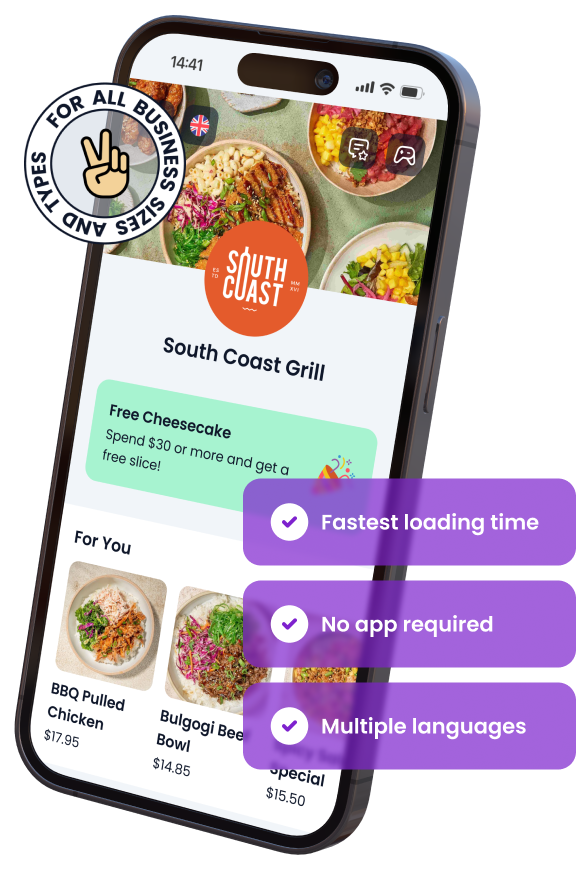
In This Article

Free AI Tools for Restaurants
TRY NOW ➜
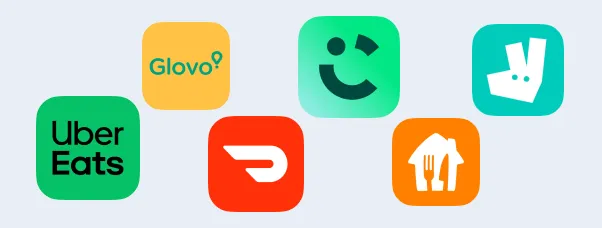
Add your food delivery app links
Make it easy for customers to find your restaurant by adding direct links to popular food delivery apps.


